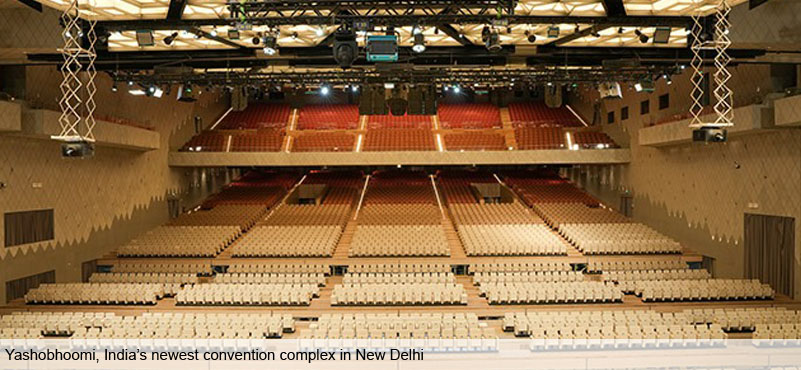Commonplace, our planet’s lung capacity hangs on to receding life supports as par for the course. Noted parliamentarian and poet, the late Vishvjit Singh recorded this dilemma in his Gaon ka Drishya, smoke from all manner of fires spiralling to unite in pitiless carbon.

A Delhi-based UN Tourism and
environment specialist
- A quick look at neighbouring Cambodia, Laos, Myanmar, Viet Nam (CLMV) tourism strategies over 2016-18, for example, will set our gravitas level vis-à-vis Core Tourism Sector Issues, Causes, and Effects:
- Enabling Environment
- Human Resources
- Infrastructure
- Protection of Cultural and Natural Assets
- Climate Change
- Market Linkages
- Tourism’s Linkages to Other Sector, Thematic, and Regional Cooperation Issues
- Nearly half of international travel is for leisure, followed by visiting friends and relatives, pilgrimage, and business.
- Opportunities, Constraints, Development Needs, and Risks, arising from sectoral GDP shares:
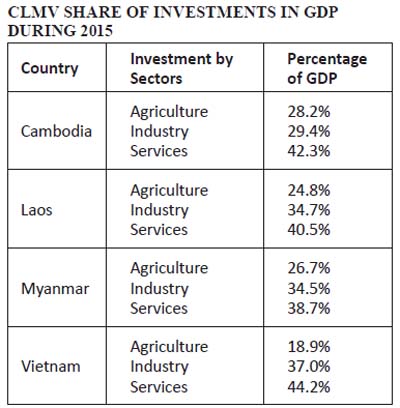 Sectoral analysis is then programmed to yield: Government Strategy, Policy, and Plans:
Sectoral analysis is then programmed to yield: Government Strategy, Policy, and Plans:
- Product and Market data-base: Tested and Updated;
- Diagnostic and Forensic readiness for Supply Chain and Value Chain enhancement;
- Multilateral Tourism Support Programme;
- Other Development Partner Support;
- Capacity Building ‘Software’ and Infrastructure ‘Hardware’ workplans;
- With tourism trade and local community fulsome participation;
- Strategic focus: livelihoods for women (SHGs), MSMEs and trained youth;
- Monitoring and Evaluation; and finally
- Sectoral Forward Strategy.
In an earlier paradigm policy shift, the Ministry of Tourism of the Government of India partnered UNDP in the Endogenous Tourism Project. “The principal Project objective was to support the Rural Tourism initiatives of the Government of India, as articulated in its National Tourism Policy 2002, through the setting up of alternative models of tourism – running parallel with the conventional tourism models – which would serve to create sustainable livelihood opportunities among low-income communities living in rural areas.”
The initial budget for this Project totalled US$ 5.8 million which was increased, together with timeframe extension, on the basis of its demonstrated high potential covering 36 rural sites in 20 States across India. Accordingly, with gap analysis, several rural site workplans were re-drawn to further strengthen Project outcomes, including market foci such as the India Calling pitch in Singapore and the National Geographic with Anoushka Shankar India sellout at the Hollywood Bowl in Los Angeles, California, USA. Overall, the Project’s tangible collateral material and website were universally appreciated, enabling it to win the prestigious PATA Gold Award.
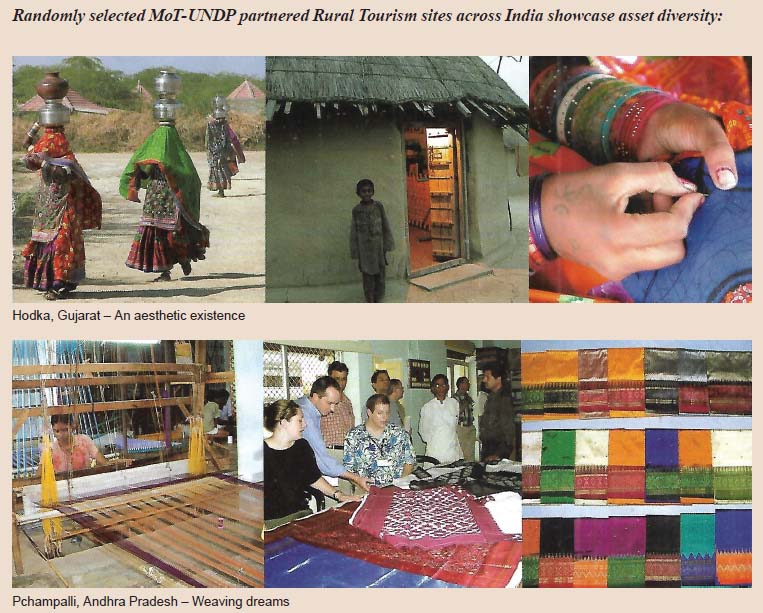
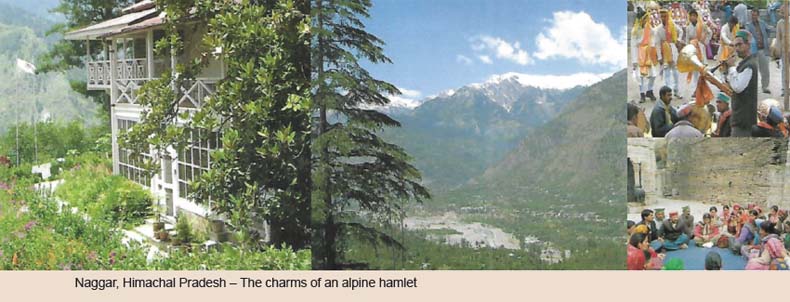
India’s diverse asset base is a pointer to sustainable, yet inclusive, rural tourism experiences. As that horizon transforms, to supplement traditional income sources, many local communities seek livelihoods diversification, driven by access to information and evolving aspirations. Due to difficulties with market access, credit and infrastructure, and for inclusion in the tourism supply chain, several rural communities have moved to urban areas.
Rural tourism assets lie markedly in rural natural and cultural heritage. Supply side outcomes must hence be preceded by infallible site visits, stakeholder meetings and professional expertise.
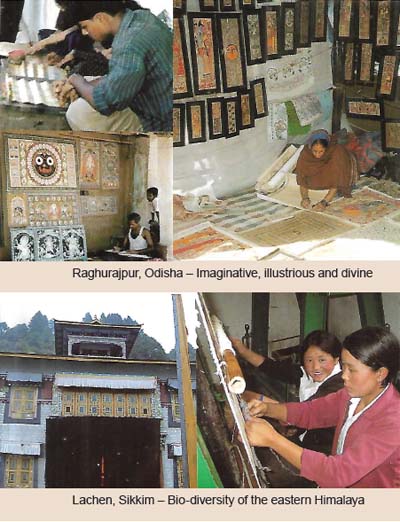 Since the end-product of rural tourism rests on local natural, cultural and intangible heritage, the other local livelihood sources are primary across the board… farming, animal husbandry, dairying.
Since the end-product of rural tourism rests on local natural, cultural and intangible heritage, the other local livelihood sources are primary across the board… farming, animal husbandry, dairying.
The target beneficiaries are custodians of local heritage and sustainable practices over generations: women, principally via gender equity; MSMEs; and trained youth.
To be sure, there are other aspects embedded in the creativity spectrum, namely:
- Self Help Groups/Kudumbashree as in Kerala;
- Mahila mandal;
- Yuv mandal;
- Local artisans;
- Other exponents of vernacular idiom;
- Local opinion leaders;
- Gram panchayat;
- Attuned NGO partner;
- Vernacular architect;
- Village tourism development committee;
- District tourism promotion committee for access to state/national bodies;
- Travel trade interface from inception;
- Visitor database;
- Carrying capacity assessment;
- Local sustainable tourism charter.
Finally, the substantive Demand side Outcome? Naturally… interactive experiences of rural life for the paying visitor. In the truest sense, the rural tourism experience is the rural way of life, enabling the visitor to:
- Interact …with local community
- Appreciate …art and craft
- Explore …heritage diversity
- Sustain …community-visitor interface
- Empower …local initiative
- Enhance …local livelihoods
- Bond …with heartland vibration.



